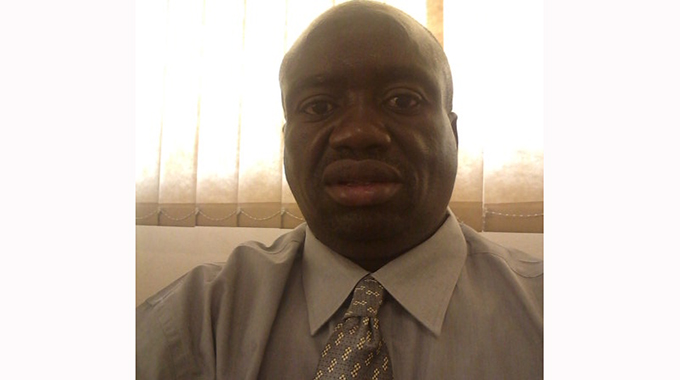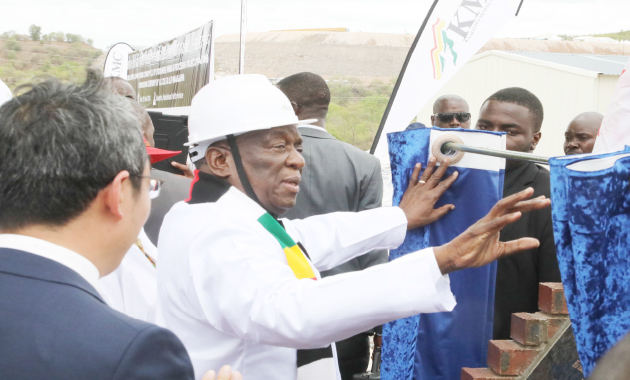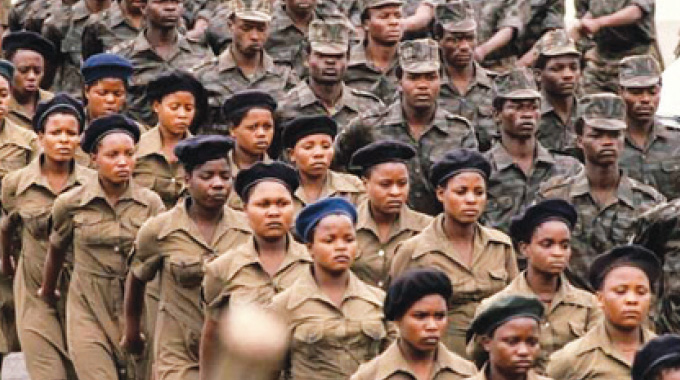Adaptive strategies essential for rural women to fight climate change

Hazel Marimbiza
Climate change is one of the biggest threats facing global development, with developing countries being most vulnerable due to their low adaptive capacity.
Southern African countries have been of late experiencing frequent droughts alternating with periods of very high rainfall. In some cases, floods and mid-season prolonged dry spells have been experienced during the same season.
Although there is still significant uncertainty regarding the climate change scenarios for sub-Saharan Africa with conflicting scenarios about which areas will get wetter and which will get drier, there is no doubt that the climate change phenomenon is slowly setting in and the general consensus appears to be that Southern Africa will experience hotter and drier climatic conditions in the medium to long term.
In Zimbabwe, some rural areas have seen harsh pressures on farmers as the planet heats up, from longer summers and harsher winters to much more unpredictable rain.
Rural female farmers are more vulnerable than men to climate change as they are reported to be the majority amongst the poorest and most disadvantaged groups in society.
In addition, women farmers are responsible for climatically sensitive tasks, such as securing food, water and energy, which ensures food security and household well-being. The disadvantaged position of women means greater difficulty in coping with disasters.
Climate change is thus seen as magnifying existing inequalities, reinforcing the disparity between women and men in their vulnerability and capability to cope with climate change.
Climate change represents a profound challenge to the livelihoods of women farmers, as it has negatively affected their sources of income and means of production that enable them to provide for their families. This is due to the fact that women have limited adaptive capacity.
Rural women who were interviewed said climatic changes have presented them with averse challenges.
Mrs Thandile Gumbo from Matobo District, said she has faced a lot of obstacles in trying to be a knowledgeable farmer and effects of climate change have just worsened her situation.
Her husband died 10 years back, and she said before he died he would do most of the farming. She was not fully involved because she had little agricultural knowledge.
“My husband did the farming. I did the preparation – sorting seeds and sometimes taking care of the livestock,” said Mrs Gumbo.
When he died, villagers suggested that she sells their farm.
“But I didn’t. I acquired some knowledge and continued my husband’s work. However in 2018, the rains grew more unpredictable, hitting the farm’s harvest,” she said.
During that time her maize crop had been pushing up tassels and she anticipated a decent harvest – until her farm sweltered through a record heatwave.
“I was very disappointed, I lost a lot of money buying expensive seed and fertilisers. All my energy used in tilling the land had gone to waste,” said Mrs Gumbo.
Mrs Gumbo represents several rural women farmers who have felt the impacts of global climate change and variability which are becoming more evident with increased incidence of droughts, floods, hailstorms, more hot days and heat waves.
According to the Zimbabwe National Gender Profile of Agriculture, rural women constitute about 70 percent of agricultural labour in rural areas.
While Zimbabwean women farmers are a force to be reckoned with, climate change has presented them with challenges of increasing their agricultural potential.
Mr Leonard Unganai, a project manager with Oxfam said women – like Mrs Gumbo – bear the greatest burden of these erratic changes in weather patterns, as they are the mainstay of agricultural production.
“Most of the crops they grow, like maize, are badly affected by the occurrence of dry spells and heavy rains,” he said.
“In the end, it is women who get affected most, compromising their ability to produce for the household and the markets.”
Women in rural areas have had to adjust and find other means of sustaining their agricultural activities so that they can make profits which enable them to fend for their families.
Mrs Gumbo for instance solely depends on agriculture for a decent livelihood. In trying to alleviate the challenges associated with climate change, she moved to growing vegetables and melons. She sells the vegetables and when the melons are ripe she makes jam which she also sells.
She is now one of the many rural women who has initiated different alternatives due to the effects of climatic change.
However, more still needs to be done to help women like Mrs Gumbo tackle climate change because projections suggest that, by the end of the 21st century, climate change will have had substantial negative impact on agricultural production and, hence, the need to find ways to secure agricultural production so as to reduce poverty.
Since agriculture is important, the negative effects of climate change call for adaption strategies and an inclusive dual approach of both gender- responsive mitigation and adaptation measures.
Talia Women’s Network (TWN) director, Mrs Saliwe Mutetwa-Zakariya, said women who are smallholder farmers should be empowered through adaptation strategies.
“We have seen water sources drying up and erratic rainfall patterns and so we should have programme initiatives which give women the skills and the capacity to be able to maximise their agricultural potential despite climate change. Focus should be on aiding marginalised communities and women farmers so that we can alleviate poverty among them caused by climate change,” said Mrs Mutetwa-Zakariya.
Last year in November, Environment, Climate, Tourism and Hospitality Industry permanent secretary Mr Munesushe Munodawafa said mainstreaming gender and climate change was one of the country’s priorities as it forged a roadmap for sustainable development among women farmers.
“Climate change is the most important issue facing the world today. The revised National Gender Policy of 2017 has climate change as one of its thematic areas to which gender sensitive programming and inclusivity has to be fostered in order to attain inclusive sustainable development,” he said.
Mr Munodawafa added that there was need to ensure full stakeholders participation across the gender divide.
“There is broad understanding for the need to support strengthening of gender roles and ensuring the mobilisation of all capacities to address climate change,” he said.
Acting director of the Community Development Department in the Ministry of Women Affairs, Community, Small and Medium Enterprises Development Mrs Tariro Chipepera said improving the livelihoods of women required legal and policy reforms.
She said this will not require only leaders to act, but to make necessary changes for a carbon-neutral world.
“Improving the lives of women and girls in rural areas requires robust legal and policy reforms such as the newly implemented Gender Action Plan (GAP) that will see women inclusion in decisions that affect their lives,” said Mrs Chipepera.
According to the SADC Gender Protocol Barometer, for climate change solutions to be truly effective, women must be included at all stages of policy and strategy development. This means that women must be included at decision making tables when stakeholders develop strategies and action plans. The Barometer notes that women, especially those in rural communal lands, need to be trained and made aware of various strategies put in place not only by local governments, but by NGOs as well as the involvement of women and girls to improve their welfare and livelihoods.
The Barometer also highlights that by 2030, the Government should have made notable strides to ensure that poor communities are taught on effects of climate change. Notable development should play a significant role in sharing information on gender dimensions of climate change and how rural women can contribute and benefit from sustainable development.











Comments